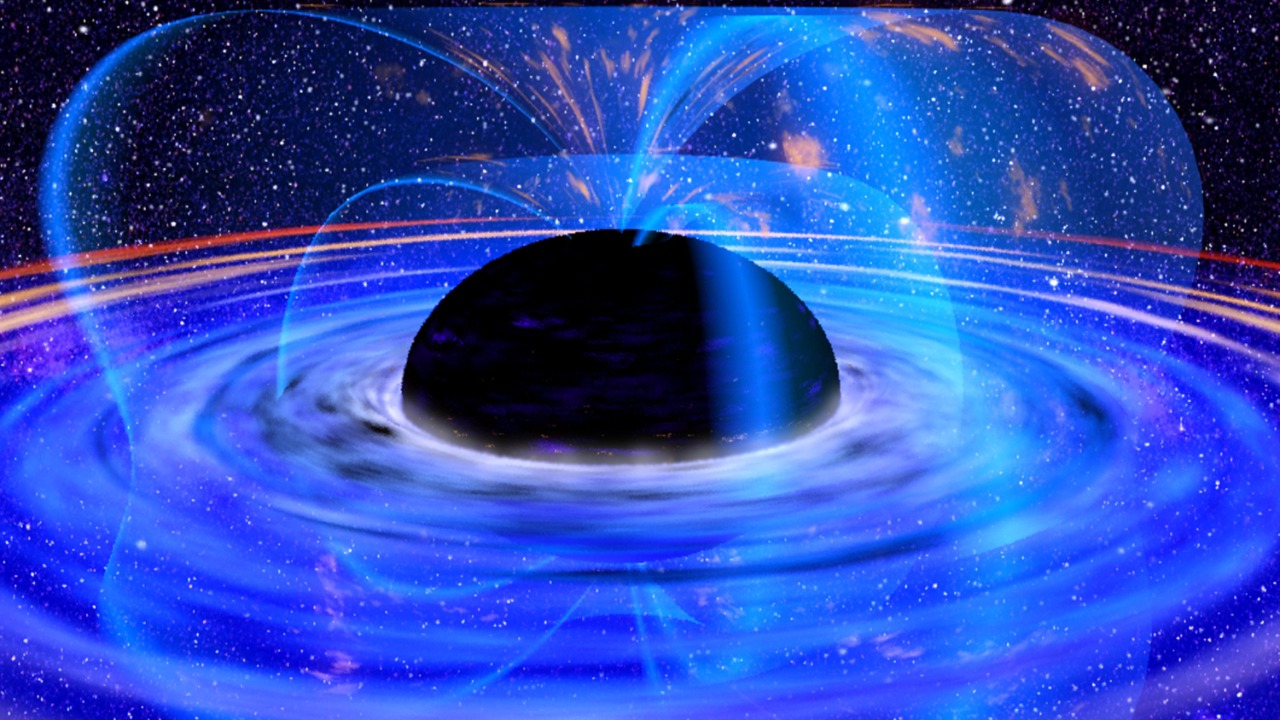
In a significant breakthrough, scientists have unraveled the mystery of cosmic rays, linking the ‘knee’ formation in their energy spectrum to supermassive black holes. This discovery, building on earlier research, provides new insights into the mechanisms of high-energy particle acceleration in the universe.
Understanding Cosmic Rays
Cosmic rays are high-energy particles originating from outer space. These particles, which include protons and atomic nuclei, travel at speeds near that of light. Detecting these cosmic rays on Earth is possible through observatories, but tracing their origins poses a significant challenge due to their deflection by magnetic fields. The energy spectrum of these cosmic rays, which has been a subject of intense study, holds profound implications for astrophysics.
The ‘Knee’ in the Cosmic Ray Spectrum
The ‘knee‘ in the cosmic ray energy spectrum is a sharp bend occurring around 10^15 electron volts. This bend marks a transition in particle flux and has been observed since the mid-20th century. The ‘knee’ formation has puzzled scientists as it indicates a cutoff in lower-energy sources, leading to speculation about rarer, more powerful origins of cosmic rays.
Previous Theories on Cosmic Ray Origins
Traditionally, supernova remnants have been considered the primary sources of lower-energy cosmic rays. These remnants accelerate particles via shock waves. However, these models have limitations, particularly in explaining the ‘knee’ and higher energies, where supernovae fall short. Early hints at supermassive causes of cosmic rays emerged from research conducted earlier this year.
Black Holes as Accelerators
Supermassive black holes, located at the centers of galaxies, can generate extreme magnetic fields capable of accelerating particles. The dynamics of accretion disks and relativistic jets associated with black holes can propel particles to ‘knee’ energies. This understanding has led to the resolution of the cosmic ray puzzle, with black holes now linked to the ‘knee’ formation.
Evidence from Observations
Data from high-altitude detectors have shown spectral features consistent with black hole origins beyond the ‘knee’. Simulations modeling particle trajectories near black holes have validated these energy thresholds. These findings align with the earlier research that suggested a supermassive influence on cosmic ray production.
Implications for Astrophysics
This link between black holes and cosmic rays reshapes our understanding of galactic particle propagation and interactions with the interstellar medium. It also has broader impacts on cosmology, including constraints on dark matter and models of galaxy evolution. Future observational tests using upcoming telescopes are expected to further confirm the role of black holes in cosmic ray generation.
Challenges and Future Research
Despite these advancements, uncertainties remain. Distinguishing black hole contributions from other extragalactic sources is a challenge. Enhanced detection technologies are needed to map cosmic ray anisotropies toward active galactic nuclei. Interdisciplinary efforts will play a crucial role in refining the supermassive cause model and furthering our understanding of cosmic rays.
More from MorningOverview